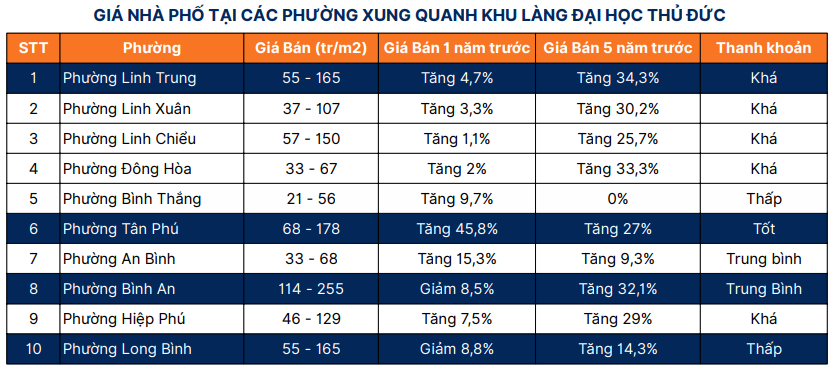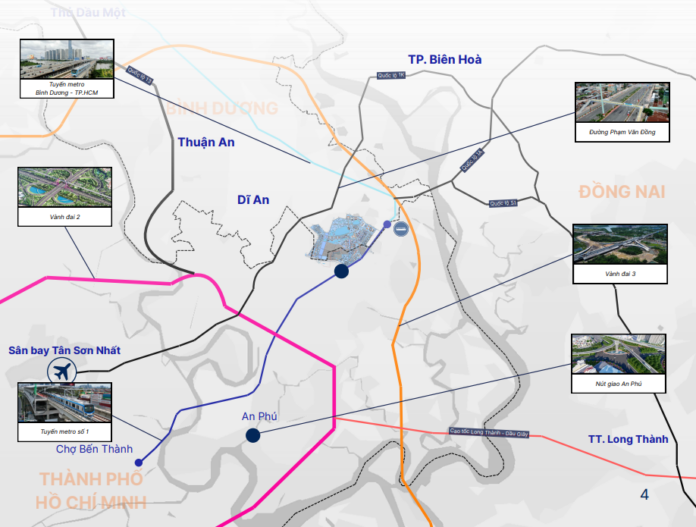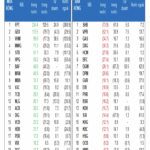The Thu Duc University Village in Ho Chi Minh City, along with neighboring areas such as Di An in Binh Duong and Bien Hoa in Dong Nai, is emerging as one of the new bright spots in the eastern real estate market. The intersection of the three localities, robust infrastructure connectivity, and dense population are key factors attracting both end-users and long-term investors to this area.
Potential for infrastructure development and high real-world demand
According to a report by FIDT Asset Investment and Management JSC in June 2025, in the context of rising real estate prices (including rental prices) in Ho Chi Minh City, especially in the Thu Duc University Village area, buying a home for children attending university is becoming a popular choice for many parents and young couples with stable incomes.
The area surrounding the University Village is witnessing stable liquidity thanks to strong real demand from students, lecturers, and young families. This is a large education and research hub with over 10 universities and approximately 60,000–70,000 students, lecturers, and staff, creating a stable demand for rental and purchased housing.
Additionally, transportation infrastructure is the main driver boosting real estate values. Specifically, roads such as Belt Road 2, Belt Road 3, and metro lines, particularly Metro Line 1 (Ben Thanh – Suoi Tien) and the Binh Duong Metro Line, will enhance the connectivity between the University Village and Ho Chi Minh City, as well as areas like Di An and Bien Hoa, thereby improving regional linkages and pushing up land values.
With the increasing scarcity of inner-city land and the tendency for real estate values to appreciate over time, FIDT assesses that this is one of the few areas in Ho Chi Minh City with remaining development land and attractive rental yields of around 5–6% per year. Many parents whose children are studying at the university also tend to buy apartments for long-term living instead of renting, contributing to the real demand for housing in the area.
|
Infrastructure landscape around Thu Duc University Village, Ho Chi Minh City
Source: FIDT
|
Are prices still soft?
According to FIDT, one of the prominent advantages of the area surrounding the University Village is that the price level is still relatively soft compared to the city center of Ho Chi Minh City. While apartment prices in Districts 1 and 3 range from over 100 to 200 million VND per square meter, apartment prices in Thu Duc University Village currently range from 30 to 45 million VND per square meter.
FIDT stated that the above-mentioned projects are suitable for buyers who intend to occupy or invest in long-term asset holding. However, investors should pay attention to legal aspects, especially for low-cost projects such as New Galaxy Hung Thinh and Topaz Homes 2. Priority should be given to projects with clear and completed infrastructure to ensure sustainable profitability.
In the housing segment, the market recorded quite diverse prices ranging from 21 to 255 million VND per square meter depending on the area. Among them, Linh Trung and Tan Phu wards are two areas with high commercial value, dense population, and synchronous infrastructure, resulting in good prices and liquidity. On the other hand, Dong Hoa and Binh Thang wards, despite having lower prices, exhibit poor liquidity due to incomplete infrastructure and limited amenities.
 Source: FIDT
Note: The highlighted projects are those that have witnessed positive real estate price growth, reflecting their development potential and high market interest.
|
Regarding land, land prices have increased steadily in wards such as Linh Trung, Binh An, and Hiep Phu, creating attractive opportunities for investors. Despite price variations, with some wards like Dong Hoa and Binh Thang experiencing slight price declines, the area generally maintains good liquidity and long-term development potential due to the growing demand from students and young workers.

Source: FIDT
Note: The highlighted projects are those that have witnessed positive real estate price growth, reflecting their development potential and high market interest.
|
FIDT evaluates that the eastern part of Ho Chi Minh City, particularly the area around the National University Village and Metro Line 1, is currently a hot spot for buying apartments for children’s education. Within a 10-kilometer radius, there are about 14 projects priced from 28 to 45 million VND per square meter, with many projects already having pink books, ensuring legal compliance and bank loan eligibility. The three critical factors driving this attraction are the living environment, convenient transportation, and rental potential.
– 13:34 18/06/2025
“Highlands Coffee Introduces the ‘Drive-Thru’ Concept to Vietnam: A Convenient, Stay-in-Your-Car Experience.”
The “drive-thru” model is a convenient and efficient way of serving customers without requiring them to step out of their vehicles. With this innovative approach, customers simply drive up to the order station, place their orders, make payments, and collect their purchases, all from the comfort of their cars. This seamless process revolutionizes the way people experience on-the-go services, ensuring speed, ease, and convenience like never before.
The Turning Point for Vietnam’s Urban Development
In just a few days, Vietnam will witness the unveiling of an extraordinary “international metropolis”.
Pouring $7 Billion into Ho Chi Minh City’s International Financial Center
The heart of Ho Chi Minh City’s International Financial Center is situated in the Thu Thiem New Urban Area, spanning 9.2 hectares. This area will be home to the offices of management, supervisory, and judicial bodies in its initial phase, with estimated investment costs totaling VND 172,000 billion (equivalent to USD 7 billion).
The Mega-Metropolis: Merging into a Super-City with Bà Rịa – Vũng Tàu, Bình Dương and Ho Chi Minh City
“This morning, General Secretary To Lam and Prime Minister Pham Minh Chinh, along with a delegation of central officials, held a working session with the Standing Committee of the Ho Chi Minh City Party Committee, Ba Ria – Vung Tau Provincial Party Committee, and Binh Duong Provincial Party Committee.”















































